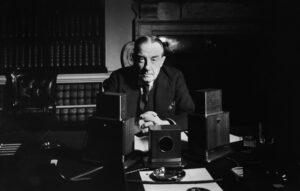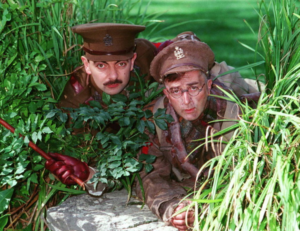A sunny Wednesday in early June 1665, and Samuel Pepys was suffering in the heat. It was “the hottest day that ever I felt in my life”, he confided to his diary, “and it is confessed so by all other people the hottest they ever knew in England”.
Pepys spent some of the day strolling with friends in the New Exchange, a shopping arcade on the south side of the Strand, before repairing to Vauxhall’s Spring Gardens, where he “walked an hour or two with great pleasure”. There was something on his mind, though. For as long as he could remember, relations with England’s neighbours had been distinctly fraught, and Lord Sandwich’s fleet was currently engaged in a struggle with the Dutch. London simmered with rumours about the outcome of the battle, but there was no certainty: as Pepys put it, “ill reports run up and down of his being killed, but without ground”.
By evening, “weary with walking and with the mighty heat of the weather”, the diarist had returned to his house in the City. The day had been pleasant enough, but now something else was troubling him. In Drury Lane, he had seen “two or three houses marked with a red cross upon the doors, and ‘Lord have mercy upon us’ writ there”. Pepys knew immediately what that meant. Plague — the first sign of the epidemic that would kill an estimated 100,000 people, a quarter of the capital’s population, in the next 18 months. To calm his nerves, he noted: “I was forced to buy some roll-tobacco to smell to and [chew], which took away the apprehension.”
Reading Pepys’s diary, you sometimes forget that he was born almost four centuries ago. In many respects he was utterly different from us, with assumptions and anxieties we can scarcely understand; and yet often he feels almost thrillingly contemporary, as if you might bump into him in the street tomorrow afternoon. Indeed, you merely have to re-read that diary entry, and you might be looking in a mirror: the stifling heat, the fears of disease, the foreign wars, the fake news.
The past is never just a mirror, of course, and it’s the height of narcissism to cast our predecessors as mere foreshadowings of ourselves. But there are times when, for obvious reasons, a particular historical moment catches the imagination — as is the case today with Pepys’s moment, the mid-17th century.
Just look, for example, at the titles in Britain’s bookshops. For a long time, commercial publishers were terrified of the 17th century. The Stuarts weren’t as sexy as the Tudors, and the age of Oliver Cromwell seemed too dark, too violent, too religious, too complicated for ordinary readers. Why read about perhaps the most significant moment in all our history — the titanic revolutionary conflict of the 1640s and 1650s, when armies surged across the map of our islands, a king was tried and executed, and a farmer from East Anglia tried to turn Britain into a religious commonwealth — when you could read yet another book about Catherine Howard?
And then, as if responding to some subterranean shift in the cultural landscape, something changed. The last few years alone have given us excellent books on Cromwell by Paul Lay and Ronald Hutton, as well as Anna Keay’s dazzling social history of Britain in the 1650s, and Malcolm Gaskill’s haunting account of witchcraft among the settlers who tried to build a new England on the other side of the Atlantic. Meanwhile, Robert Harris’s most recent blockbuster, Act of Oblivion, follows the hunt for Charles I’s Parliamentarian killers from England to America.
Even politicians are at it. In the Conservative MP Jesse Norman’s new novel The Winding Stair, which charts the bitter feud between Sir Francis Bacon, father of the Scientific Revolution, and Sir Edward Coke, the most influential jurist of the early modern era, we appear to be plunged back into the world of early 17th-century Jacobean England. But right from the first few pages, the parallels are obvious. Among his characters, for example, is James I, a man with “bulging, expressive eyes” and an “awkward gait”, who “dresses finely, yet somehow manages to look ill-kempt”, and always “loves to display his learning with a classical or biblical line”. Even if you didn’t know that Norman had been at Eton with Boris Johnson, worked for him as a junior minister and eventually released a blistering public letter calling for his removal, you’d probably spot the parallel.
Why does the Stuart era suddenly feel so resonant? Some of the answers are obvious. People in the 17th century, like us, were struggling to come to terms with an extraordinary advance in information technology — in their case, the printing press. The political and religious passions of the Civil War weren’t merely reflected in the papers and pamphlets of the day: they were fuelled by them, too.
Then as now, readers craved paranoia, hysteria, sensation and scandal, exemplified by the coverage of the rebellion of Irish Catholics in 1641. The pamphlets of the time claimed that some 200,000 Protestants had been massacred; in reality, the true figure was probably lower than 10,000. Illustrations showed the rebels literally spearing babies on their pitchforks and ripping women’s bodies open with bestial savagery. “A woman mangled in so horred a maner that it was not possible shee should be knowne”, read one cheery caption. Fake news, as it turned out. But fake news mattered, for when Cromwell’s troops landed in Ireland eight years later, bent on vengeance, such pictures were seared into their imaginations.
Then as now, technology also mattered because it allowed news to spread more quickly than ever before, not least from abroad. The political climate before the Civil War was all the more feverish because people were addicted to the latest reports from the Thirty Years War, the ferociously complicated religious and political conflict that tore central Europe apart and killed millions of people across vast tracts of Germany. Like today’s war in Ukraine, the Thirty Years War became a kind of Rorschach test: what you saw depended on your existing religious and political prejudices.
And with news came ideas: the proto-rationalism of René Descartes and Baruch Spinoza, the republicanism of John Milton, the liberalism of John Locke, the ruthless realism of Thomas Hobbes. No wonder that, as in 2023, many people felt dizzy at the pace of change — particularly in the aftermath of the Civil War, when the king had lost his crown, the radicals were in the ascendant and even the calendar, stripped of the festivals of old, had been rewritten with revolutionary zeal. “Holy-dayes are despis’d, new fashions are devis’d. / Old Christmas is kickt out of Town,” runs one celebrated ballad of the day. “Yet let’s be content, and the times lament, you see the world turn’d upside down.”
This belief that the world had been turned on its head — the kind of thing you often hear today, whether about Brexit, or transgenderism, or whatever — was remarkably common in the 17th century. “God Almighty has had a quarrel lately with all Mankind,” lamented the Welsh historian James Howell in 1647, “for within these twelve years there have been the strangest Revolutions and horridest things happened, not only in Europe but all the world over.” The world, he thought, was “off its hinges”.
He wasn’t alone. As armies trudged across the British countryside, rebellion tore holes in the empires of the Ming and the Ottomans, and the casualties mounted in central Europe, other commentators sank into despair. Every day, recorded the Oxford scholar Robert Burton, brought news of “war, plagues, fires, inundations, thefts, murders, massacres, meteors, comets, spectrums, prodigies, apparitions; of towns taken, cities besieged in France, Germany, Turkey, Persia, Poland etc”. Four years later, a Spanish tract suggested a terrifying but increasingly popular explanation: “This seems to be one of the epochs in which every nation is turned upside down, leading some great minds to suspect that we are now approaching the end of the world.”
Behind all this, some historians believe, lay another anxiety very familiar to us today: climate change. Pepys may have been sweating like a pig that day in June 1665. But as one of the great scholars of the early modern world, Geoffrey Parker, points out in his book, Global Crisis, this was the Little Ice Age, in which temperatures plunged across the world.
Snow fell in subtropical Japan; sub-Saharan Africa suffered a five-year drought; the rivers of modern Mexico and Virginia dried up; across Europe, harvests failed and thousands starved. The first months of 1621 were so cold that people walked across the frozen Bosphorus from Constantinople to Asia. In China, Poland, Russia and the Ottoman Empire, the population fell by about a third. In some parts of Germany, the population fell by half. In 1651, Hobbes warned that, without a strong state, life would be “solitary, poor, nasty, brutish and short”. For many people, it was like that already.
Finally, inevitable, there’s the W-word. The radical Puritans at the heart of the convulsions of the mid-17th century, whose zealous righteousness seems so off-putting to us today, never referred to themselves as “woke”. But they’d have recognised the social justice movement’s ethos immediately. They too believed that they had been awakened to injustice and set apart from the fallen masses. They too believed that the world was divided into the saved and the sinners, those who walked in the light of the Lord and those who dwelt in the valley of darkness. They too believed that life was an unending struggle against sin, in which you must always do better, and in which there were few greater crimes than heresy and apostasy. And they too lived in dread of that most wicked and dreaded figure of all: the witch — the old woman next door who had cursed your cow; the neighbour’s wife who made faces at your children; the bestselling novelist who knew what a woman was.
Perhaps we should go easy on the Puritans, though. Even Pepys, whose hedonistic humanity seems so divorced from their joyless moralising, thought they made an unsatisfyingly easy target. Three years after that hot day in 1665, he saw a production of Ben Jonson’s play Bartholomew Fair, long a favourite of his. “It is an excellent play,” he wrote afterwards: “the more I see it, the more I love the wit of it.” But there was a caveat. “Only the business of abusing the Puritans begins to grow stale, and of no use, they being the people that, at last, will be found the wisest.” But Pepys could afford to say that, because his Puritans had been beaten. Our own are still with us, more’s the pity.
Still, if the 17th-century parallel really does hold up, then think what’s just around the corner! A new age of pleasure-loving debauchery. The revival of the coffee house. The triumph of the beefsteak. The return of the wig. Can’t wait.
*
Dominic Sandbrook discusses the 17th century with Anna Keay and Malcolm Gaskill in two recent episodes of his podcast, The Rest is History.
Disclaimer
Some of the posts we share are controversial and we do not necessarily agree with them in the whole extend. Sometimes we agree with the content or part of it but we do not agree with the narration or language. Nevertheless we find them somehow interesting, valuable and/or informative or we share them, because we strongly believe in freedom of speech, free press and journalism. We strongly encourage you to have a critical approach to all the content, do your own research and analysis to build your own opinion.
We would be glad to have your feedback.
Source: UnHerd Read the original article here: https://unherd.com/



